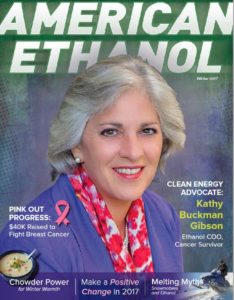Category: Farm
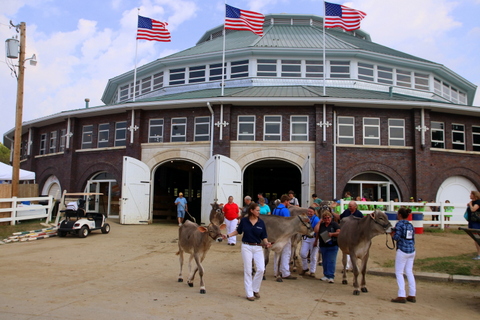
Iconic State Fair Architecture: Historic Buildings Reflect Decades of Memories
The Iowa State Fair is a homecoming for Iowans, and the historic buildings that grace the fairgrounds in Des Moines provide iconic venues for this statewide family reunion. There’s also a lot of surprising history behind many of these structures, from the Agriculture Building to the Livestock Pavilion.
“The Iowa State Fair connects generations of Iowans,” said Iowa Governor Kim Reynolds, who spoke during the opening ceremony of the 2017 Iowa State Fair on August 10. “There are so many wonderful memories and traditions here at the fair, which showcases the best of Iowa’s agricultural and cultural heritage.”
While the first Iowa State Fair was held October 25-27, 1854, in Fairfield, supported by a total operating budget of $323, the fair moved to its present location in 1886.
“The state fair moved to this site in Des Moines after the State Legislature and the City of Des Moines appropriated funds to purchase Calvin and Arminta Thornton’s farm,” said Leo Landis, state curator for the State Historical Society of Iowa, who helped lead an Iowa State Fair walking tour on Aug. 10. “One building original to the Thornton farm remains–Grandfather’s Barn, which is on the far eastern edge of the fairgrounds.”
Livestock Pavilion opened in 1902
Between the time the Fair Board purchased the land in June 1886 and when the fair opened in September 1886, crews constructed 67 buildings. “Of those, Pioneer Hall is the only one that remains today,” said Landis, museum curator at the State Historical Museum.
By the 1900 Iowa State Fair, most of the buildings built for the 1886 fair were still in use. They were beginning to show signs of decay, however, and roofs were particularly bad. It was time for the Iowa State Fair to clean up the fairgrounds.
One of the first new buildings added more than a century ago was the Livestock Pavilion. Back in 1901, more than 650 cattle were shown at the Iowa State Fair – only about 50 less than were shown that year at the International Stock Show at Chicago, Landis said. With future Iowa State Fairs expected to have even more cattle, the Iowa Legislature appropriated $37,000 for a fireproof steel-and-brick stock pavilion, similar to one that had just been constructed at the Illinois State Fairgrounds.
The Livestock Pavilion was the first major brick-and-steel structure built at the Iowa State Fairgrounds. “By constructing buildings out of these materials, the Fair Board gave the fair a sense of permanence and safety at this location,” said Landis, who noted that the new Livestock Pavilion officially opened for the 1902 fair and has been used for stock judging, lectures, entertainment and more for decades.

A new Agriculture Building was constructed in time for the 1904 Iowa State Fair. This famous building is home to the beloved Butter Cow. The Agriculture Building is one of the finest examples of Double Jeffersonian architecture remaining in the world.
1904 State Fair showcased new Agriculture Building
A new Agriculture Building came along two years later, in time for the 1904 Iowa State Fair. Located at the intersection of Grand Avenue and Rock Island Avenue, the Agriculture Building was built along the route to and from the State Fair from the Rock Island Railroad depot.
From the beginning, the Agriculture Building has been used as the agricultural, horticultural and dairy building. It’s home to the famous Butter Cow and other butter sculptures, which have been part of the Iowa State Fair since 1911.
“The Homestead,” a well-known farm newspaper of the late 1800s and early 1900s published in Des Moines, touted the new Agriculture Building as “one of the finest structures for exhibiting products of the farm that can be found in the Central West.”
The building’s design was inspired by the Exposition Halls at the Columbian Exposition, the world’s fair held in Chicago in 1893. The Agriculture Building is one of the finest examples of Double Jeffersonian architecture remaining in the world.
“Building a structure of such grand scale – with 33,800 square feet of floor space – suggested to visitors that the Iowa State Fair was an event of both civic and social importance,” said Jessica Rundlett, special projects and outreach coordinator at State Historical Museum of Iowa, who assisted with the Iowa State Fair walking tour.
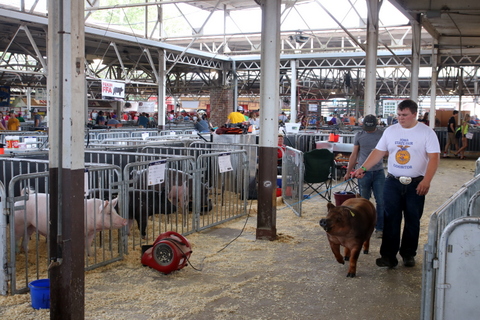
Kyle Andrews with the Wayne FFA chapter exhibited hogs during the 2017 Iowa State Fair. The Swine Barn was built in 1907.
Swine Barn design enhanced ventilation
When a new Swine Barn was constructed for the 1907 Iowa State Fair, the roof covered 185,000 square feet of stalls, exhibition areas and two central show rings that could seat more than 800 people. “The Homestead newspaper said you had to see it to believe its grand size,” Landis said.
The state appropriated $75,000 to build the Swine Barn. The building’s roof profile is designed to provide superior lighting and ventilation. The long open windows at roof level and open exterior walls draw in fresh air. Today you can see the Big Boar at the Swine Barn, as well as the Avenue of Breeds, which is coordinated by the North Polk FFA.
Horse Barn cost $25,000
The Horse Barn was completed in 1912 for $25,000 and renovated in 1929. Measuring 156 feet by 224 feet, the new barn could accommodate 132 draft horses and a like number of ponies, according to the Homestead newspaper. Th article also noted the new barn was equipped with water troughs, wash stands, sanitary feed mangers and automatic hayracks, Landis said.

The Horse Barn was completed in 1912 for $25,000 and renovated in 1929.
Cattle Barn named for Iowa farmer
The Iowa State Fair’s building boom of the early twentieth century included the new Cattle Barn, which opened for the 1914 fair. While the original barn could accommodate 108 head of cattle, the barn now has ties for 1,600 cows, thanks to multiple expansions through the years.
Among the early proponents of Iowa’s cattle industry was Iowa Governor William Larrabee of Clermont, Landis noted. Larrabee helped introduced Brown Swiss dairy cattle to Iowa after studying the breed and concluding Brown Swiss were best suited for Iowa’s climate.
Today, the Cattle Barn is named for John Putney, a farmer from Gladbrook who was also a long-time cattle exhibitor, president of the Sale of Champions and beef superintendent. Putney was appointed the first executive director of the Blue Ribbon Foundation, which has raised more than $135 million in the last 25 years to renovate and preserve the Iowa State Fairgrounds.
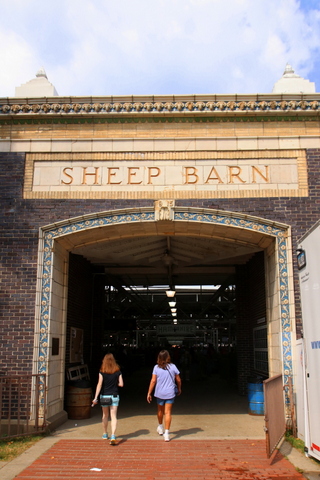
In 1915, the state legislature appropriated $14,000 to build a sheep pavilion. The Sheep Barn opened for the 1917 Iowa State Fair. The building is notable for the detailed terra cotta designs on the east façade, including a row of rams’ heads near the roof.
Sheep Pavilion opened for 1917 fair
During the Golden Age of Agriculture, state funding was available to construct a wide range of livestock barns at the Iowa State Fair. In 1915, the state legislature appropriated $14,000 to build a sheep pavilion. The Sheep Barn opened for the 1917 Iowa State Fair. The building is notable for the detailed terra cotta designs on the east façade, including a row of rams’ heads near the roof.
The legacy lives on
The Iowa State Fairgrounds was listed on the National Register of Historic Places in 1987. It’s a fitting honor for a unique venue filled with many architectural marvels. “The late Bill Wagner, a preservation architect from Iowa, noted that ‘the complex contains a representative collection of almost all architectural styles for most of the past 200 years,’” Landis said.
Historic buildings are just one of the many reasons the Iowa State Fair is the best state fair in the nation, Reynolds said. “I’m extraordinarily proud of this tradition. Remember—nothing compares to our great Iowa State Fair!”
Take a virtual tour
The Iowa State Fair Walking Tour can be found on the Iowa Culture App. Either download the app, or log onto dcaapp.com. Click on the featured tour “Star” button on the right and look for the “Iowa State Fair tour.”
Want more?
Thanks for stopping by. I invite you to read more of my blog posts if you want more more intriguing Iowa stories and history, along with Iowa food, recipes and tips to make you a better communicator. If you like what you see and want to be notified when I post new stories, be sure to click on the “subscribe to blog updates/newsletter” button at the top of this page. Feel free to share this information with friends and colleagues who might be interested, too.
If you’re hungry for more stories of Iowa history, check out my top-selling “Culinary History of Iowa: Sweet Corn, Pork Tenderloins, Maid-Rites and More” book from The History Press, as well as my Calhoun County” book from Arcadia Publishing, which showcases the history of small-town and rural Iowa. Order your signed copies today! Iowa postcards are available in my online store, too.
Let’s stay in touch. I’m at darcy@darcymaulsby.com, and yettergirl@yahoo.com.
P.S. Thanks for joining me. I’m glad you’re here.
@Copyright 2017 Darcy Maulsby & Co.
About me:
Some people know me as Darcy Dougherty Maulsby, while others call me Yettergirl. I grew up on a Century Farm between Lake City and Yetter and am proud to call Calhoun County, Iowa, home. I’m an author, writer, marketer, business owner and entrepreneur who specializes in agriculture. Learn more at www.darcymaulsby.com.

Remembering Ambassador Branstad’s Legacy from the 1980s Farm Crisis in Iowa
A morning talk-show host on WHO Radio in Des Moines posed an interesting question when former Iowa Governor Terry Branstad was confirmed as the U.S. ambassador to China on May 22, 2017. The broadcaster asked what might define Branstad’s enduring legacy, and he suggested it may be Branstad’s service during the 1980s Farm Crisis.
The more I thought about it, the more I agreed. I was just a kid in the 1980s Farm Crisis and didn’t really understand what was happening, but I knew it was bad. I remembering writing a poem about the Farm Crisis in 7th grade in 1987 for my contribution for a time capsule that was buried in Lake City.
Sheltered as I was from my family’s financial realities, I had no idea my dad only made $800 one year during the peak of the Farm Crisis. Still, that was far better than what some other farmers were experiencing. As one farmer told me during a recent interview about his family’s Century Farm, the thing he dreaded the most during the Farm Crisis was the phone ringing. “You never knew who it might be or what bad news it might be,” he said.
The Farm Crisis was just starting its brutal transformation of Iowa agriculture when Terry Branstad was first elected governor of Iowa in 1982. This new era was a far cry from the heady go-go days of the 1970s, when agriculture was booming, and making good money in farming was not only possible, but almost easy.
Farmers were hurting
By the early 1980s, however, a combination of national and international factors, including a Federal Reserve Board policy of high interest rates to fight inflation and a grain embargo against the Soviet Union, devastated the farm economy. Crop prices to dropped below the cost of production. Land values plummeted. Countless rural Iowa banks closed.
“All of us who lived in Iowa at the time saw friends and neighbors lose their family farms and struggle with what to do next to earn a living,” said Iowa Sen. Charles Grassley, who recalled the Farm Crisis in a 2015 press release he issued about Branstad becoming the longest-serving governor in the nation’s history.
By the time Branstad took office as governor, individual farmers across the state were hurting. No one really wanted to believe it was as bad as it was, but agriculture was in serious trouble.
In early December 1985, an eastern farmer who was apparently distraught over his finances killed the president of his bank, his neighbor and his own wife before he killed himself. Dale Burr, 63, who farmed near Lone Tree, made national headlines after he walked into the Hills Bank and Trust Company and shot its president, John Hughes, with a 12-gauge shotgun.
With farmers in desperate need of help, the Iowa governor’s office created the Rural Concern Hotline to provide assistance where possible. The state tried to help producers with debt restructuring as much as it could.
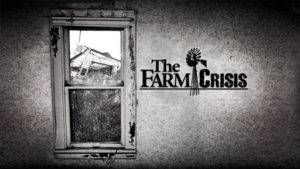 As the Farm Crisis deepened by the mid-1980s, however, one of the biggest frustrations was the seeming indifference from officials in Washington, D.C. “President Reagan was very supportive and sympathetic,” Branstad recalled in an Iowa Public Television documentary about the Farm Crisis. “Unfortunately, David Stockman, who worked for him and who was the director of the Office of Management and Budget, was pretty cavalier in his attitude. Considering all the stress and challenges we were going through in Iowa, we didn’t just take no for an answer.”
As the Farm Crisis deepened by the mid-1980s, however, one of the biggest frustrations was the seeming indifference from officials in Washington, D.C. “President Reagan was very supportive and sympathetic,” Branstad recalled in an Iowa Public Television documentary about the Farm Crisis. “Unfortunately, David Stockman, who worked for him and who was the director of the Office of Management and Budget, was pretty cavalier in his attitude. Considering all the stress and challenges we were going through in Iowa, we didn’t just take no for an answer.”
Hollywood goes to Congress, Branstad creates a new environment for business
Even Hollywood took note. Two popular films, Country and The River, drew the eyes of America to the plight of the nation’s farm families. Soon, Hollywood stars like Jessica Lange were testifying before Congress about the Farm Crisis.
Far from Congress and Hollywood, however, Branstad relied on his small-town and farm background to lead Iowa through the Farm Crisis.
“The state needed men and women with vision and ambition to pull the economy out of the doldrums,” Grassley noted. “It needed people who could see the potential for farmers to add value to their operations and for Iowa to diversify its economy. Terry Branstad was one of those people.”
Branstad was at the forefront of creating a new environment to do business. He welcomed and actively encouraged innovation that would capitalize on Iowa’s bedrock work ethic and strong schools. As a result, agriculture continues to be a mainstay of the Iowa economy while providing the economic engine that benefits many other employment sectors, including renewable energy, manufacturing, crop research and much more.
Ironically, some of Branstad’s actions in the Farm Crisis didn’t seem that significant at the time but would benefit agriculture decades in the future. In 1985, while still in his first term as governor, Branstad welcomed Xi Jinping, who was then a Communist party official and feed cooperative director from Hebei Province. Xi Jinping, who is now the president of China, spent several days in Muscatine in 1985 leading a delegation of Chinese government officials who saw Iowa agriculture first-hand and became acquainted with Iowa farm families.
That visit 32 years ago forged an unlikely bond between China and rural Iowa that endures today. I believe this bodes well for rural Iowa and our role in the global economy as Branstad serves as America’s ambassador to China.
It’s also a large feather in the cap of an Iowa farm kid from Leland, population 284, whose legacy as Iowa’s governor and ambassador to China can’t be told accurately without looking back to those painful, pivotal days of the 1980s Farm Crisis.
Want more?
Thanks for stopping by. I invite you to read more of my blog posts if you want more more intriguing Iowa stories and history, along with Iowa food, recipes and tips to make you a better communicator. If you like what you see and want to be notified when I post new stories, be sure to click on the “subscribe to blog updates/newsletter” button at the top of this page. Feel free to share this information with friends and colleagues who might be interested, too.
Let’s stay in touch. I’m at darcy@darcymaulsby.com.
P.S. Thanks for joining me. I’m glad you’re here.
@Copyright 2017 Darcy Maulsby & Co.
About me:
Some people know me as Darcy Dougherty Maulsby, while others call me Yettergirl. I grew up on a Century Farm between Lake City and Yetter and am proud to call Calhoun County, Iowa, home. I’m an author, writer, marketer, business owner and entrepreneur who specializes in agriculture. Learn more at www.darcymaulsby.com.
This column first appeared in Farm News in June 2017.

“Thank God It’s Over:” Iowa Veteran Recalls the Final Days of World War 2
While V-E Day (Victory in Europe) was proclaimed “the celebration heard ‘round the world,” it was only a temporary reprieve for Harold Geisinger. This 19-year-old Iowa farm boy from Storm Lake was on his way to Le Havre, France, with the U.S. Army when Germany surrendered unconditionally to the Allies on May 7, 1945.
After a low-key celebration, Geisinger and his fellow soldiers boarded a box car in France bound for Hanover, Germany. Geisinger then joined a convoy in Bavaria, the section of Germany where American troops were guarding railroads, train depots, irrigation sites and more.
While the war was over in Europe, fighting continued on the other side of the globe. In the summer of 1945, there was talk that Geisinger and his fellow soldiers would likely be on board the next U.S. military ship bound for the Pacific Theater. Everything changed, however, when Japan surrendered on Sept. 2, 1945, following President Harry S. Truman’s orders to drop two atomic bombs on Japan in August 1945.
“When we got the word that Japan quit, we didn’t celebrate,” said Geisinger, 91, who still gets tears in his eyes when he thinks back to those days nearly 72 years ago. “We simply sat down and said, ‘Thank God it’s over.’”
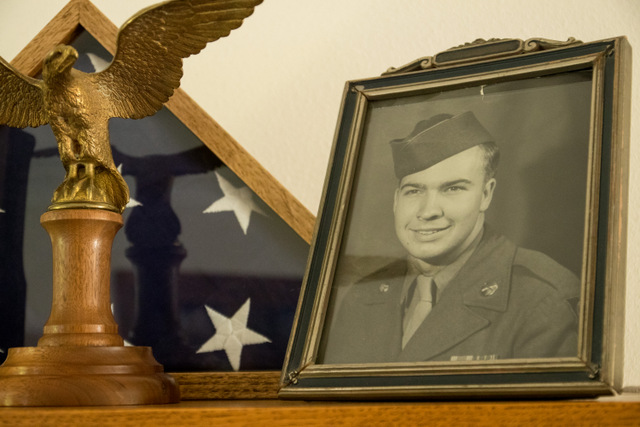
After graduating from Storm Lake High School in 1944, Harold Geisinger was drafted into the U.S. Army on Aug. 2, 1944. “Back then, we all wanted to serve,” he said.
Battle of the Bulge put Geisinger on the fast track
As a World War 2 veteran, Geisinger is becoming a rare breed. Only 620,000 of the 16 million Americans who served in World War II were alive in 2016, according to U.S. Department of Veterans Affairs statistics.
Like many members of the Greatest Generation, Geisinger’s life would never be the same after Japan attacked Pearl Harbor on December 7, 1941. “I was walking up the steps of our house and the radio was on,” said Geisinger, who stills lives in this house on the north edge of Storm Lake. “That’s when I heard the news about Pearl Harbor.”
After graduating from Storm Lake High School in 1944, Geisinger was drafted into the U.S. Army on Aug. 2, 1944. “Back then, we all wanted to serve,” he said.
Following 17 weeks of basic training in Arkansas, things moved quickly for Geisinger. “As my basic training was ending, the Battle of the Bulge was beginning, so the Army fast tracked us,” said Geisinger, who left on Christmas Day 1944 for Camp Myles Standish in Massachusetts. This U.S. Army camp functioned as a departure area for thousands of U.S. soldiers during World War 2.
In mid-December 1944, Germany had launched its last major offensive and intended to split the Allied armies. This surprise blitzkrieg in northwest Europe, which became known as the Battle of the Bulge, did not turn the tide of the war in Adolph Hitler’s favor but did result in American and civilian casualties.
The Battle of the Bulge was still raging when Geisinger shipped out for Europe on January 2, 1945. “I was on my two-week ‘ocean cruise,’” said Geisinger, who had turned 19 just a few days earlier on Christmas Eve.
When Geisinger and his fellow soldiers with the Army’s 83rd Infantry Division, Company I, arrived at Le Havre, France, they were transferred to railroad box cars bound for Givet, a small community in the north of France, near the Belgian border. “These box cars were called ’40 by 8s,’ meaning they could hold 40 men or 8 horses,” said Geisinger, who recalled that it was close to a month after he left America before he had the chance to take a real shower—not just a saltwater shower on the ship.
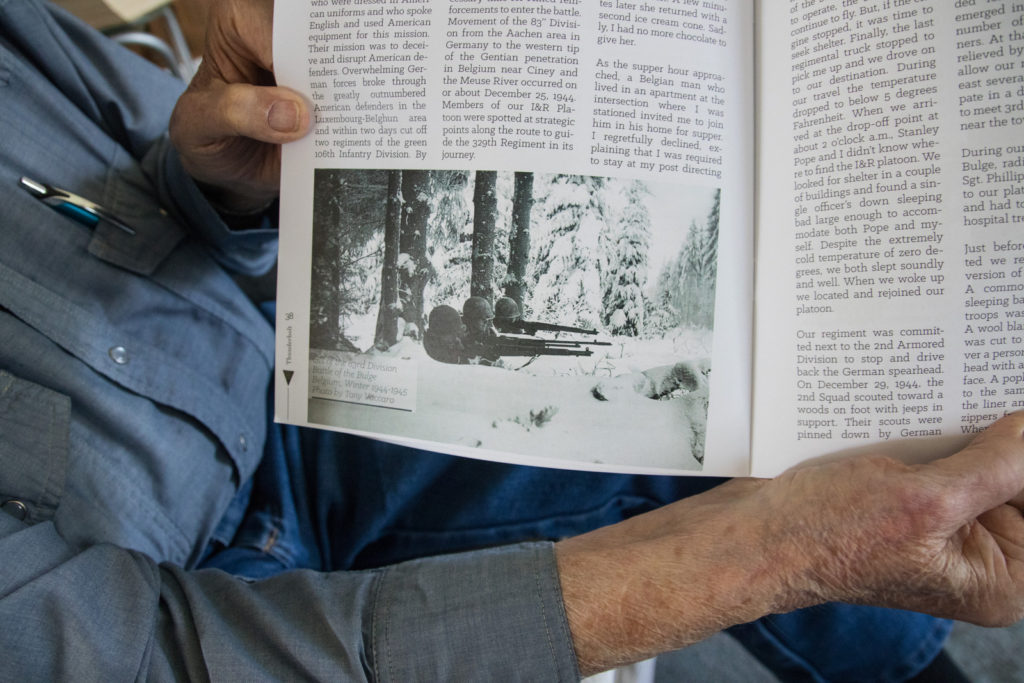
The Battle of the Bulge was still raging when Harold Geisinger shipped out for Europe on January 2, 1945. Geisinger and his division spent most of their time training in the Hürtgen Forest, located along the border between Belgium and Germany. “Our division was preparing to push across Germany,” Geisinger said.
Much worse than the shower situation, however, were the frigid January temperatures and lack of adequate overshoes during the box car ride. “I froze my feet,” Geisinger recalled.
After reaching their destination, Geisinger and his division spent most of their time training in the Hürtgen Forest, located along the border between Belgium and Germany. “Our division was preparing to push across Germany,” Geisinger said.
In the meantime, however, Geisinger was waging his own battle with a cough that wouldn’t go away. The coughing became severe that he couldn’t eat. On Feb. 14, 1945, he had to go on sick call and was diagnosed with viral pneumonia. Geisinger returned to France and was transferred to a hospital in southern England at Newton Abbot. “I was there two months with no medicine,” said Geisinger, who eventually recovered and returned to active duty.
In early May 1945, Geisinger was crossing the English Channel in a ship bound for Le Havre, France, when he heard the news that Germany had surrendered. Although Hitler and the Nazis had been defeated, Geisinger knew he wouldn’t be returning home to northwest Iowa anytime soon. After boarding another box car, Geisinger headed to Bavaria to rejoin Company I and the men he had served with before.
Everyone wondered if they’d be called to fight the war in Japan. “Had we shipped out, some said we would have left from Marseille in southern France and sailed around Cape Horn and onto Japan,” Geisinger said. “When I heard that Japan surrendered, I kept thinking, ‘Someday we’ll get to go home.’”
Transitioning from solider to farmer
That day wouldn’t come for months, however. Geisinger remained in Europe and remembers pulling guard duty along the Danube River. He crossed the river with a buddy one night to meet Russian soldiers on the other side.
“We drank a little beer with a Russian sergeant and tried to communicate using hand signals and the little bit of German we and the Russian had picked up,” Geisinger said. “The one thing the Russian sergeant wanted was American uniforms. He wanted all the American uniforms he could get.”
Geisinger couldn’t access any uniforms other than the one he was wearing. He had no idea why the sergeant wanted American uniforms, although he later suspected an ulterior motive. “I assumed it was for infiltration,” said Geisinger, whose distrust of the Russian sergeant proved accurate as the Cold War heated up.
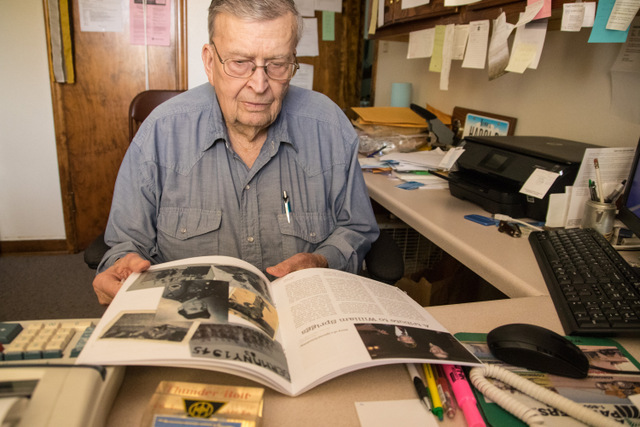
As he sits in his home office, Harold Geisinger looks through pieces of the past, including World War 2 history books.
By the time Geisinger was honorably discharged from the Army, he had achieved the rank of corporal. He looked forward to returning to Storm Lake to farm and finally reached home in July 1946. By then, agriculture had entered a new era as the transition to mechanical horsepower from traditional horsepower became complete. New equipment like combines also became more common in row-crop production.
Geisinger started farming with his father, L.J. Geisinger, on the Washington Township farm north of Storm Lake that had been in their family since 1915. Geisinger also used the G.I. Bill to earn his pilot’s license and enjoyed flying for many years.
Geisinger and his wife, Laura May, a Storm Lake High School classmate, raised their three children on the farm, along with corn, soybeans, hay, cattle and hogs. Farming still interests Geisinger, who helps run the field cultivator in the spring and helps combine in the fall. “I even planted some beans this spring,” said Geisinger, who is proud of the rich heritage of his family’s Century Farm in Buena Vista County.
For decades, Geisinger served as a rifleman in the color guard unit in Alta (VFW Post 6172). While he has retired from these duties, his memories of World War 2 remain vivid, and he’s proud he was able to serve his country.
“My military experiences gave me more of global view of the world,” Geisinger said. “Even though a lot has changed since World War 2 and America has its deficiencies, I don’t know of a better place to call home.”
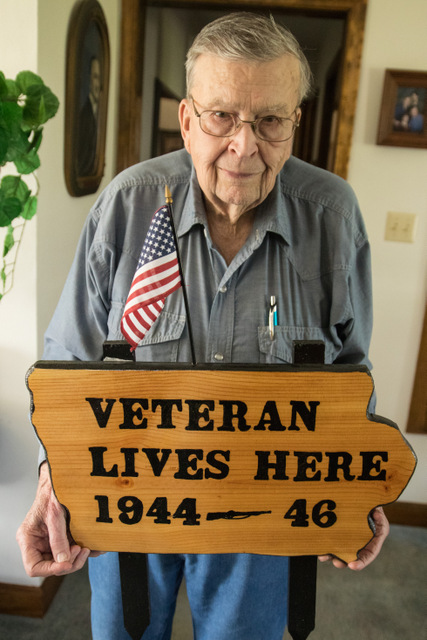
Harold Geisinger’s memories of World War 2 remain vivid, and he’s proud he was able to serve his country.
It was truly an honor to meet Harold Geisinger in May 2017 and interview him at his home and at his family’s farm north of Storm Lake, Iowa. He is a living legacy of America’s Greatest Generation. I’m forever grateful that Harold and hundreds of thousands of others like him were willing to serve. I’m also thankful he was willing to share his stories with me so I can share them with you. (I originally wrote this article for the Memorial Day 2017 of Farm News.)
Want more Iowa culture and history?
I invite you to read more of my blog posts if you want more Iowa stories, history and recipes, as well as tips to make you a better communicator. If you like what you see and want to be notified when I post new stories, be sure to click on the “subscribe to blog updates/newsletter” button at the top of this page. Let’s stay in touch.
Also, if you enjoyed Harold’s military story, be sure to check out my Memorial Day 2017 post on “How to Thank Veterans for Their Service.” I interviewed two recently-retired U.S. Marines from the Wounded Warrior Battalion, and their insights are invaluable.
If you’re hungry for more stories of Iowa history, check out my top-selling “Culinary History of Iowa: Sweet Corn, Pork Tenderloins, Maid-Rites and More” book from The History Press, as well as my Calhoun County” book from Arcadia Publishing, which showcases the history of small-town and rural Iowa. Order your signed copies today! Iowa postcards are available in my online store, too.
P.S. Thanks for joining me. I’m glad you’re here.
@Copyright 2017 Darcy Maulsby & Co.

Harold Geisinger served with the U.S. Army’s 83rd Infantry Division, Company I,
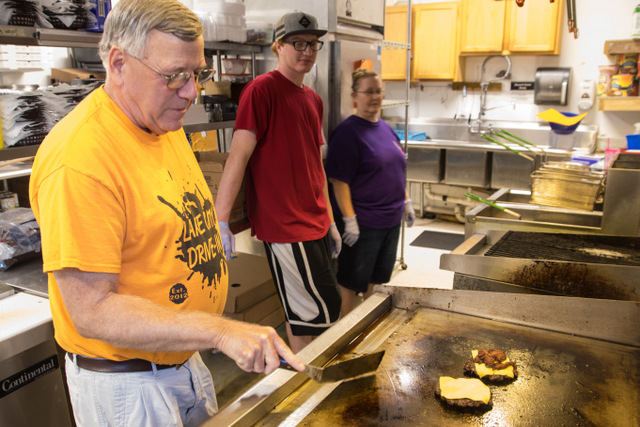
Iowa Beef Booster: Larry Irwin Takes a New Twist on Burgers
Make no mistake, the humble hamburger still reigns supreme from backyard barbecues to fast-food drive-ins across Iowa. But this Iowa icon also provides the perfect palette for culinary creativity when my friend Larry Irwin showcases his Burger of the Month flavors in my hometown of Lake City.
“I’m not doing anything fancy,” said Irwin, who has run the Lake City Drive-In since 2012. “I just like cooking down-home, comfort food.”
While it’s hard to beat a classic bacon cheeseburger, which remains one of the Lake City Drive-In’s top sellers, customers also love the monthly burger specials. Favorites include the Taco Burger (spiced with taco seasoning and chipotle and topped with nacho-cheese flavored chips), Darcy’s Meatloaf Burger, the Swiss Mushroom Burger, and the Ranch Burger (enhanced with homemade ranch dressing, pepper jack cheese and bacon).
“Burgers of all types are always our top sellers,” said Irwin, who serves more than 50 burgers a day, on average. “It’s fun to experiment with new flavors and feature them as the Burger of the Month.”
Top tips for unbeatable burgers
Interestingly, this adventurous spirit in the kitchen isn’t second nature for Irwin, who spent more than 30 years of his career in finance and banking. “I never did much cooking at home,” said Irwin, who grew up on a cattle and grain farm between Lohrville and Rockwell City. “I certainly never thought I’d run a restaurant.”
Irwin has found that offering new men
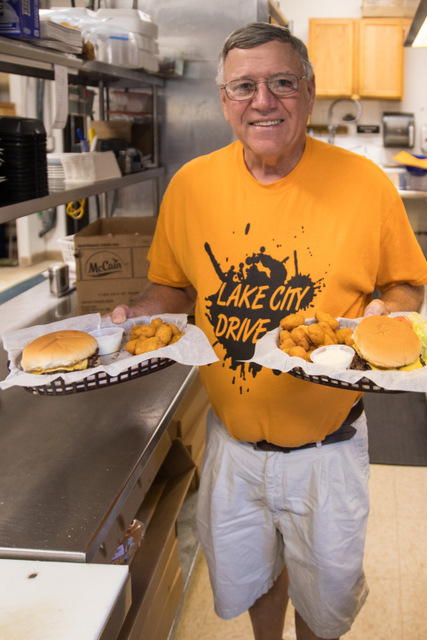
Larry Irwin shows off some tasty burgers from the Lake City Drive-In.
u items is one of the secrets to keep people coming back to the Lake City Drive-In. Inspiration for the Burger of the Month comes from a variety of sources.
“Sometimes our customers suggest ideas,” Irwin said. “A lot of the Burger of the Month ideas come from my son, Chris, who is an agronomist in northeast Iowa. He travels a lot for his job and tells me about burger flavors he discovers in various cafes.”
While unique flavors are part of the fun, a great burger starts with the basics, said Irwin, who shares the following tips:
• Select an 80/20 ground beef for the best flavor. Irwin always uses fresh beef, never frozen patties, to make his 1/3 pound burgers.
• Preheat the grill before you place the hamburger patties on the grill.
• Cook the hamburger patties over medium heat. If the temperature is too high, it’s easy to burn the outside of the burger and leave the inside undercooked, said Irwin, who cooks his burgers for about five minutes on each side.
• Season the patties on the grill. Irwin sprinkles a mix of garlic powder, onion powder, Lawry’s seasoning salt, table salt, white sugar and black pepper on both sides of each hamburger patty as the meat cooks.
• Don’t forget to butter and toast the bun before serving the burger.
Time-saving systems in the kitchen are also invaluable. Since the Lake City Drive-In is located on Main Street across from South Central Calhoun High School, things can get hectic when hungry crowds stop by, especially during volleyball tournaments and home football games. Irwin plans ahead on these days and cooks each hamburger patty for two minutes per side before placing the partially-cooked patties in a warm slow cooker. When the crowds arrive, it only takes a couple more minutes of grilling time before the burgers are ready.
This strategy also pays off during planting and harvest, when the drive through becomes one of the busiest places at the Lake City Drive-In. “You can always tell when an order is going out to farmers, because there are at least five or six cheeseburgers in there,” said Irwin, who farmed at one point in his career.
Keeping things simple while adding a little variety is the key to a great burger, Irwin added. “I love the flavor of beef. If I could only have one meat for the rest of my life, I’d choose hamburger, because I can make anything out of it.”
Hungry for more? Check out my blog post and Farm News column “Get Your Grill On: How to Build a Better Burger.”
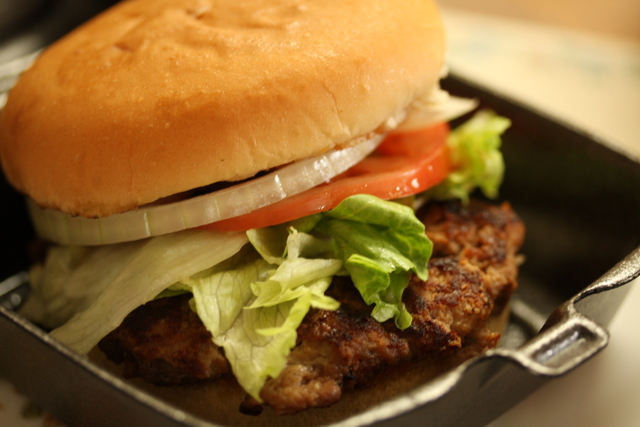
Darcy’s Meatloaf Burger
Darcy’s Meatloaf Burgers
Larry Irwin will be featuring these Meatloaf Burgers, made from my recipe, as the Burger of the Month in June 2017.
2 pounds ground beef
1 1 / 2 to 2 cups herb-seasoned stuffing mix (experiment to find what amount helps the burger patties stick together the best)
1 onion, chopped
1 teaspoon seasoning salt
1/4 teaspoon freshly-ground pepper
1 teaspoon garlic powder
2 large eggs, lightly beaten
1 /4 cup milk
2 tablespoons barbecue sauce
1 / 4 cup ketchup
2 tablespoons brown sugar
1 teaspoon dry mustard
Combine ground beef, stuffing mix, onion, salt, pepper and garlic powder. In a separate bowl, beat eggs, milk, and barbecue sauce. Combine barbecue sauce mixture with meat mixture.
In a separate bowl, combine ketchup, brown sugar and dry mustard. This mixture can either be spread as a glaze while the burgers are cooking on the grill, or the glaze can be mixed into the burger patty mixture before the burgers are grilled.
Shape beef mixture into patties. Grill over medium heat to desired doneness. If using the ketchup mixture as a glaze, spread over the top of each burger during the final minutes of cooking on the grill.
Ranch Dressing
While this makes restaurant-sized quantities, scale down the recipe for home use.
1 gallon regular mayonnaise
1 / 2 gallon buttermilk
2 packages (3.2 ounces each) powdered ranch dressing mix
Combine all ingredients and stir with an electric mixer. Refrigerate.
Boom Boom Sauce
This spicy sauce has a kick and tastes great on burgers and salads.
4 cups Thousand Island dressing
3 / 4 cup buffalo hot sauce
1 / 4 cup red pepper flakes
Combine dressing, buffalo sauce and red pepper flakes; refrigerate.
Sloppy Joes
1 pound hamburger
1 can chicken gumbo soup
Ketchup and mustard, to taste
Brown sugar, to taste
Salt and pepper, to taste
Brown the hamburger; drain. Add soup and season with ketchup, mustard, brown sugar, salt and pepper until the desired flavor is achieved.

This story first ran on Farm News, May 2017.
Want more Iowa culture and history?
Read more of my blog posts if you want more Iowa stories, history and recipes, as well as tips to make you a better communicator.
If you’re hungry for more stories of Iowa history, Larry is kind enough to carry my books at the Lake City Drive-In. You can also check out my top-selling “Culinary History of Iowa: Sweet Corn, Pork Tenderloins, Maid-Rites and More” book from The History Press, as well as my Calhoun County” book from Arcadia Publishing, which showcases the history of small-town and rural Iowa. Order your signed copies today! Iowa postcards are available in my online store, too.
P.S. Thanks for joining me. I’m glad you’re here.
@Copyright 2017 Darcy Maulsby & Co.
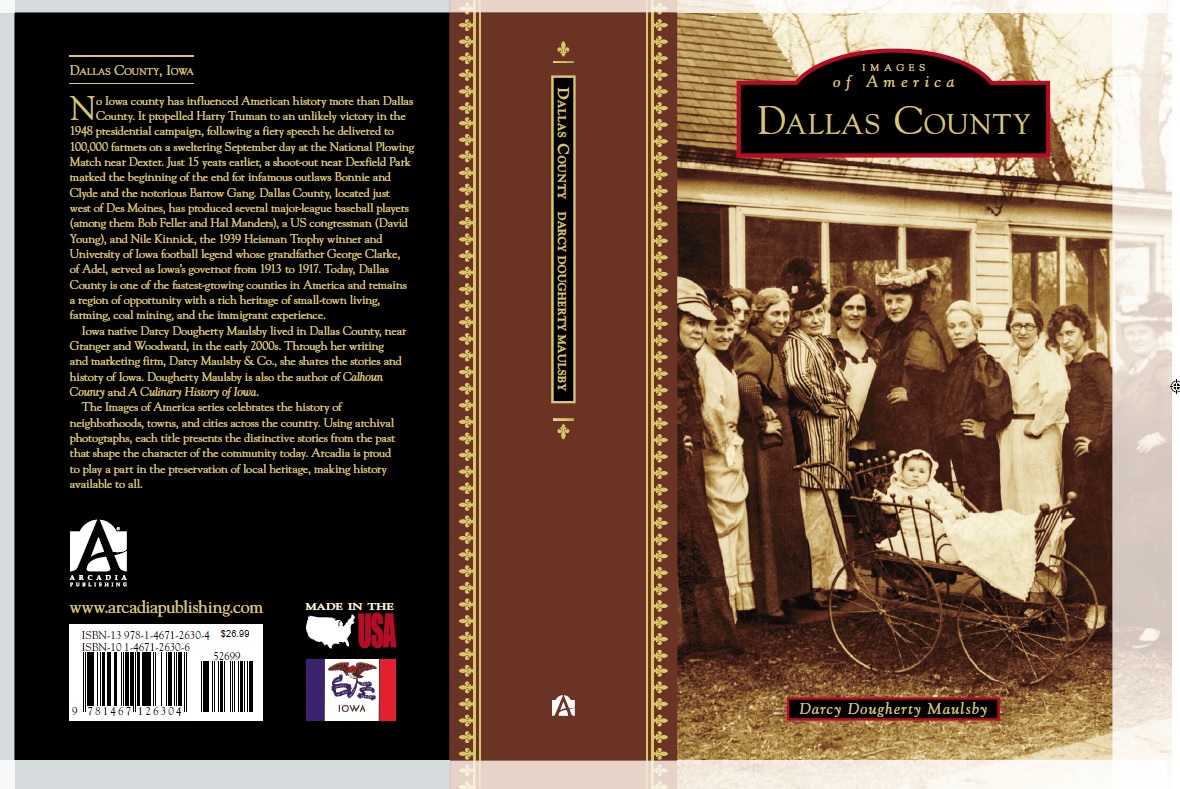
Coming Soon–“Dallas County,” a New Iowa History Book!
No Iowa county has influenced American history more than Dallas County. It propelled Harry Truman to an unlikely victory in the 1948 presidential campaign, following a fiery speech he delivered to 100,000 farmers on a sweltering September day at the National Plowing Match near Dexter. Just 15 years earlier, a shoot-out near Dexfield Park marked the beginning of the end for infamous outlaws Bonnie and Clyde and the notorious Barrow gang.
Dallas County, located just west of Des Moines, is a study in contrasts, from its key role on the Underground Railroad in the 1850s to the revival of the KKK in the 1920s. Dallas County has also produced several Major League Baseball players (including cousins Bob Feller and Hal Manders), a US congressman (David Young), and Nile Kinnick, the 1939 Heisman Trophy winner and University of Iowa football legend whose grandfather, George Clarke of Adel, served as Iowa’s governor from 1913 to 1917.
I’m very excited to announce that “Dallas County,” my third Iowa history book, will be released by Arcadia Publishing on Sept. 4, 2017! This will also be one of the publisher’s first books to be available in a hard cover version for $26.99. Want to know the story behind the cover? These dynamic ladies of the Van Meter Matrons Club (founded in 1909) socialized while improving their knowledge of Iowa heritage and current events. When the group celebrated its 50th anniversary in 1959-1960, historian Hazel Lauterbach said the group “helped me be a better homemaker, citizen, and community member and has taught me the true meaning of teamwork.”
Discover the fascinating stories of Dallas County, which is one of the fastest-growing counties in America and remains a region of opportunity with a rich heritage of small-town living, farming, coal mining, and the immigrant experience.
More details coming soon!
Want more Iowa culture and history?
Read more of my blog posts if you want more Iowa stories, history and recipes, as well as tips to make you a better communicator.
If you’re hungry for more stories of Iowa history, check out my top-selling “Culinary History of Iowa: Sweet Corn, Pork Tenderloins, Maid-Rites and More” book from The History Press, as well as my Calhoun County” book from Arcadia Publishing, which showcases the history of small-town and rural Iowa. Order your signed copies today! Iowa postcards are available in my online store, too.

Leftover Ham? Make This Amazing Crustless Spinach and Ham Quiche
A ham for Easter dinner has been a tradition in my family for as long as I can remember. It’s no wonder, since I grew up on a farrow-to-finish hog farm in Calhoun County, Iowa. Ever wonder why ham became an Easter tradition?
In the days before refrigeration, hogs were harvested in the fall. The hams were preserved by curing (salting and/or smoking). This process took a long time, and the first hams were ready to eat in the spring. Ham, then, was a natural choice for the Easter celebration.
The National Pork Board recently conducted a Ham Research Study (wouldn’t you love that job?) and found that that 69 percent of Americans served ham for Easter dinner in 2016. Also, 55 percent of consumers enjoy ham as an everyday meal. I’m certainly one of them.
If you have leftover ham this Easter, why not power up your next meal with my Crustless Quiche? This recipe is incredibly simple, flavorful and packed with veggies and protein. What more could you ask for?
Crustless Spinach and Ham Quiche
1 tablespoon olive oil
1 cup chopped onion
1 cup sliced fresh mushrooms (or 2 cans sliced mushrooms)
Diced red and orange peppers, if desired
1 package (10 ounces) frozen chopped spinach, thawed and drained
1 cup chopped, fully cooked ham
5 large eggs
3 cups shredded Cheddar or Monterey Jack cheese
1/8 teaspoon fresh-ground pepper
In a large skillet, saute onion and mushrooms in oil until tender. Add spinach and ham; cook and stir until the excess moisture is evaporated. Cool slightly. Beat eggs; add cheese and mix well. Stir in spinach mixture and pepper; blend well. Spread evenly into a greased 9-in. pie plate or quiche dish. Bake at 350° for 40-45 minutes or until a knife inserted in center comes out clean. Yield: 8 servings. Enjoy!
Want more Iowa culture and history?
Read more of my blog posts if you want more Iowa stories, history and recipes, as well as tips to make you a better communicator.
If you’re hungry for more stories of Iowa history, check out my top-selling “Culinary History of Iowa: Sweet Corn, Pork Tenderloins, Maid-Rites and More” book from The History Press, as well as my Calhoun County” book from Arcadia Publishing, which showcases the history of small-town and rural Iowa. Order your signed copies today! Iowa postcards are available in my online store, too.
P.S. Thanks for joining me. I’m glad you’re here.
@Copyright 2017 Darcy Maulsby & Co.
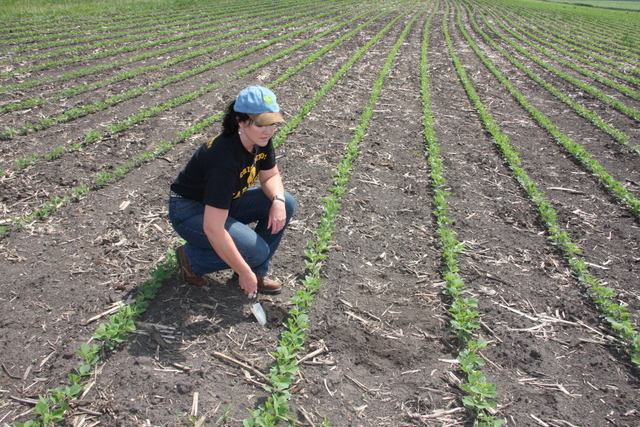
Learning from the Land: 9 Surprising Ways Farmers Make Conservation a Priority
Spring planting will soon arrive here in Iowa, but planting our Calhoun County fields isn’t the only thing on my mind. My family is always looking for ways to embrace conservation and better manage our land, because we understand the benefits of improved water quality and soil sustainability extend far beyond our fields.
This mindset defines any true steward of the land, and Iowa is blessed with an abundance of conservation-minded farmers. This is reflected in the Iowa Environmental Leader Award, which recognizes the exemplary voluntary efforts of Iowa’s farmers who are committed to healthy soils and improved water quality.
We were honored to receive a 2016 Iowa Environmental Leader Award last August at the Iowa State Fair from Iowa’s governor, lieutenant governor, Iowa Department of Agriculture and Land Stewardship staff and Iowa Department of Natural Resources staff. It was inspiring to see how many other progressive, dedicated farm families across Iowa are redefining the sustainable nature of modern agriculture.
Learning from the land is just part of my DNA. My great-great grandfather, John Dougherty, emigrated from Ireland and settled in Calhoun County north of Lake City in 1889. He purchased 200 acres, and history records that he “placed the land under a high state of cultivation,” a legacy my family carries on today with our Century Farm.
I’m also guided by the philosophy of another Iowan, Aldo Leopold, whose “land ethic” called for a principled, caring relationship with nature. “When we see land as a community to which we belong, we may begin to use it with love and respect,” noted Leopold, author of the Sand County Almanac.

The residue of the previous year’s crop helps hold our precious soil in place and builds organic matter in the soil.
Here are 9 ways that Iowa farm families like mine are putting this land ethic into practice:
1. Building on a legacy of conservation. Iowa agriculture reflects a long history of people helping the land. The process accelerated in 1935, when the Soil Conservation Service was created in the U.S. Department of Agriculture. In this era, young men with the Civilian Conservation Corps (CCC) worked on hundreds of Iowa farms to assist with soil-erosion-control projects, such as terracing hills, digging ponds, repairing gullies and planting trees for wind breaks. In 1948, more than 100,000 farmers from across the Midwest flocked to the National Soil Conservation Field Days in Dexter, Iowa, to learn new conservation practices. Even President Harry Truman made an appearance see farmers’ conservation efforts first-hand. (You can read more about it in my blog post “Riding with Harry,” where I interviewed a young Iowan who escorted Truman on a bulldozer in the fields.) While much has changed in farming since the 1930s and 1940s, one thing endures—our commitment to be good stewards of the land and keep our land productive for generations to come.
2. Prioritizing soil health. I’m convinced that unlocking the secrets of the soil is the next frontier in farming. As world population and food production demands rise, keeping our soil healthy and productive is of paramount importance. By using cover crops, diverse rotations and other systems, more Iowa farmers are increasing their soil’s organic matter while improving microbial activity. As a result, farmers are increasing water infiltration, controlling runoff and enhancing soil health—all while harvesting better yield and profit potential.
3. Balancing the three-legged stool of sustainability. Successful farm management involves environmental sustainability, economic sustainability and social sustainability that benefits not only our farm, but our community, state and beyond. Without all of those three legs, the sustainability stool falls down. That’s why my family has invested in a number of best-management practices, including soil testing to better manage fertilizer applications, grassed waterways and grassed field borders to help control soil erosion, conservation tillage, drainage water management, and the addition of windbreaks and shelterbelts. These practices help improve soil health, prevent erosion, boost yield potential and keep nutrients in place where they can nourish our crop and protect Iowa’s water quality.
4. Learning from others. I’m blessed to live in the epicenter of agriculture, where farmers have a strong support network to help enhance their conservation and farm management strategies. I value input from Iowa State University Extension, Iowa Farm Bureau Federation, Iowa Soybean Association, Iowa Corn Growers Association, MaxYield Cooperative’s SciMax Solutions, Natural Resources Conservation Service, Practical Farmers of Iowa and other trusted organizations. In my roles as a freelance ag journalist and president of the Calhoun County Farm Bureau and Calhoun County Corn Growers, I enjoy meeting with other conservation-minded farmers across the state who are willing to question current management practices and never stop asking, “Is there a better way?”
5. Finding conservation-minded urban partners. As Iowans, we’re all in this together when it comes to conservation. I applaud the City of Storm Lake for its city-wide plan emphasizing green infrastructure practices. These practices include bioreactors, which essentially function like large “coffee filters” to help improve water quality. The results are impressive. City manager Jim Patrick tells me that Storm Lake has seen a bioreactor remove 45 percent of the nitrates coming off agricultural land in the area. Storm Lake has also hosted “reverse field days” so farmers, soil and water conservation groups and others can see the progress that’s being made. “These partnerships are vital, because rural and urban communities are in this together,” Patrick told me. “It’s not city water or ag water; it’s all our water.”
6. Focusing on continuous improvement. A spirit of continuous improvement contributes to long-term success in any business, including our farm. My dad, Jim Dougherty, served as a township committee member with the Agricultural Stabilization and Conservation Service, the forerunner of USDA’s Natural Resources Conservation Service. Dad was also quick to see the value of conservation tillage and other practices that make the farm productive and sustainable. Today, we are using precision ag tools to maximize production and conservation. We never stop seeking solutions.
7. Developing a conservation philosophy. If you never try something different, how do you know if you’re maximizing your investment on every acre? My conservation philosophy is to keep learning, help my family do our best to protect Iowa’s precious soil and water resources, and pass on a legacy of conservation to future generations.
8. Providing leadership. We’ve hosted numerous media professionals at our farm, from the local newspaper to USA Today and “Market to Market,” to share what we’re doing to promote conservation and protect soil and water quality. In 2015, I also worked with the Iowa Food and Family Project to coordinate and host Expedition Yetter, a bus tour of farms in west-central Iowa that allowed urban Iowans to see conservation in action. (Watch “Market to Market’s” Expedition Yetter and water quality video here.) That same year, I also testified before the U.S. Senate Small Business Committee in Washington, D.C. to explain to federal lawmakers how conservation plays a key role on my family’s farm.
9. Enjoying the journey. Enhanced conservation, like improved farm management, is a quest that never ends. I value the legacy of farmland that was passed on to my family from previous generations and enjoy the challenge of maximizing our acres. With all the technology available today, it’s exciting to see what’s next as we keep learning from the land to enhance the sustainable nature of modern agriculture.
Darcy Dougherty Maulsby is a proud member of a Century Farm family, author, entrepreneur, business owner, and farm leader from Lake City. Visit her online at www.darcymaulsby.com.
* This editorial first appeared in the April 9, 2017, Sunday edition of the Fort Dodge Messenger.
P.S. Thanks for joining me. I’m glad you’re here.
@Copyright 2017 Darcy Maulsby & Co.
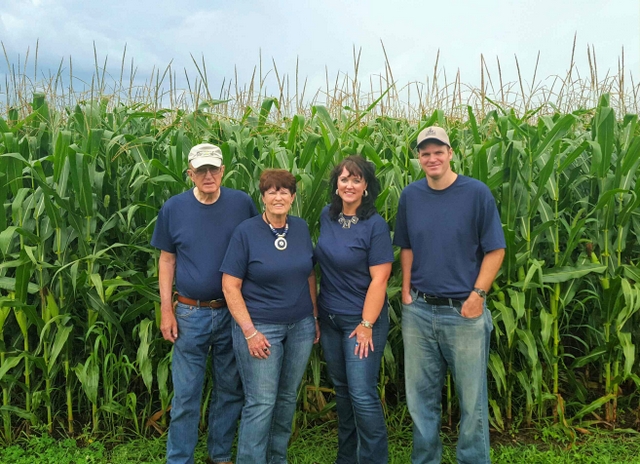
My family (including my dad, Jim, my mom, Jan, me and my younger brother, Jason, on our Calhoun County Century Farm.

Shakespeare Club Maintains 123 Years of Good Taste in Small-Town Iowa
While one of Lake City’s oldest clubs likely wouldn’t have had any farm women for members when the group formed the 1890s, a farm wife (who is also my mom) is now the club’s president and has belonged to the group longer than any other member.

Jan Dougherty, Shakespeare Club president
“This was originally a very formal club where the ladies in town served white-tablecloth-style dinners and used their good china and silverware,” said Jan Dougherty of Lake City, president, who joined the Shakespeare Club in 1972. “Now we’re much more relaxed and just like to have fun.”
Part of the fun involves cooking classes, preparing homemade treats for the “lunch” following the meeting and sharing recipes. The group has visited Sweet Things Bakery in Lake City and recently enjoyed a cooking class taught by Robin Qualy of Lake City, who runs La Casa Cuisine and teaches people how to make homemade pasta and more.
“I like the camaraderie and enjoy getting to know people better through Shakespeare Club,” said Pam Feld of Lake City, who joined the group a few years ago.
Organized in 1894, the Shakespeare Club holds the honor of being the second oldest club in Lake City. It was organized by four young women interested in their social and intellectual advancement. Programs were arranged to study the lives and works of famous authors, although the greater part of each year was devoted to the works of Shakespeare. Later, the programs were diversified to include the study of music and the arts, as well as the cultures of Europe and South America.
During World War 1, Shakespeare Club members held benefit teas and auctions to raise money for the Red Cross. In the 1920s, a three-day celebration was held to commemorate the club’s silver anniversary. Parties, picnics, and a presentation of a picture to the library were part of the festivities. “The Shakespeare Club is famous for doing things right,” quoted the Lake City Graphic newspaper in 1923.
Through the years, club members have been instrumental in supporting the progress of schools and the local library, as well as civic improvements. As it has for years, the group continues to meet in members’ homes, and each meeting includes a program or special activity and ends with a luncheon.
“I like meeting in people’s homes,” said Pat Albright of Lake City. “It’s a comfortable feeling where we can be ourselves and enjoy each other’s company.”
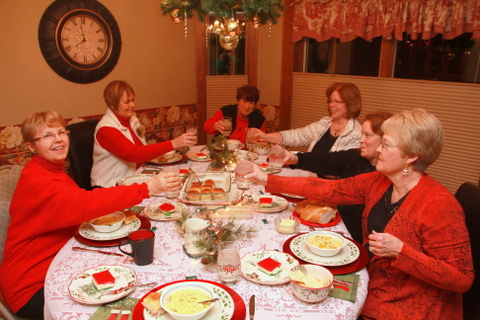
Members of Lake City’s Shakespeare Club enjoy homemade food and lots of laughs during this holiday celebration at Jan McClue’s home.
This also appeals to Jan McClue, who hosted the group’s 2016 Christmas party at her home near Lanesboro. “I like that we’re a group for fun, and I enjoy the interesting outings we go on around the area.”
One of the group’s favorite destinations is Studio Fusion in Fort Dodge, where members design their own glass picture frames, dishes, jewelry and more. No matter where they meet, however, snacks and homemade treats are always on the agenda. “Good food has always been part of Shakespeare Club, and I think it’s neat the club has lasted all these years,” Dougherty said. “Our motto could be, ‘We don’t meet if we don’t eat.’”

Darcy’s Corn Tortellini
Healthy Tortellini Corn Chowder
Smoky bacon combines with tender cheese tortellini for a creamy and comforting take on the usual corn chowder, which is one of my favorite soup recipes. I served it at the Shakespeare Club’s 2016 Christmas party at Jan McClue’s home near Lanesboro.
5 slices bacon
1 large onion, chopped
2 ribs celery, chopped
1 cup red, orange, yellow peppers, diced
2 cups fresh, canned or frozen corn kernels (about one and a half cans of canned corn)
2 cups chicken broth
1 cup sliced carrots
⅓ c unbleached or all-purpose flour or Wondra flour
3 cups 1% milk
⅓ cup chopped fresh basil, or 1 teaspoon dried basil
½ teaspoon salt
¼ teaspoon fresh ground pepper
8 ounces low-fat fresh or frozen cheese tortellini, cooked and drained
1 cup frozen green beans
1 to 2 cups diced ham, optional
Set a Dutch oven over medium heat. Add the bacon. Cook for 1 minute, or until it releases some of its moisture. Add the onion, celery, and bell peppers. Cook for 5 minutes, or until the vegetables are soft. Add the corn, broth and carrots. Bring to a boil over high heat. Reduce the heat to medium. Simmer for 15 minutes.
Place the flour in a medium bowl. Gradually add the milk, whisking until smooth. Pour mixture into the Dutch oven. Stir until well-blended. Add the basil, salt and pepper. Cook, stirring occasionally, for 3 minutes, or until the soup thickens. Add the tortellini, green beans and ham, if desired. Cook for 2 minutes, or until heated through.

Jan McClue’s Beef Dill Dip
Beef Dill Dip
This tasty dip from Jan McClue is simple to make and can be served with bagel wedges or crackers.
1 16-ounce carton sour cream
2 tablespoons parsley
2 teaspoons Accent seasoning
2 packages dried beef, chopped
1 1 / 2 cup Miracle Whip
2 teaspoons dill weed
1 medium onion, finely chopped
Mix all ingredients together. Serve with crackers or bagel wedges.
Cheesy Artichoke Dip
This three-ingredient appetizer from Jan Dougherty of Lake City takes only minutes to make.
1 package cream cheese
1 can artichoke hearts, drained
2 cups shredded mozzarella cheese
Combine all ingredients. Bake at 350 degrees, or until top of the dip lightly browns.

Celebration Slush is oh-so-tasty!
Celebration Slush
This simple slush from Jan McClue, a Shakespeare Club member who lives on a farm near Lanesboro, makes any party more festive.
12 ounces frozen lemonade
12 ounces frozen limeade
1 1 /2 quarts cranberry-apple juice
1 / 2 cup granulated sugar
2 cups strawberry schnapps
2 cups water
Combine all ingredients and freeze in a plastic container, like an ice cream bucket. To serve, add a splash of lemon-lime soda pop, raspberry vodka or strawberry daiquiri.
Taco Soup
This flavorful soup from Marie Schwarm of Lake City is sure to please on a cold winter day.
1 pound of ground beef (cooked and drained)
1 can of corn 1 can great northern beans
1 can black beans
1 can red beans
1 medium size can of diced tomatoes
1 packet of Hidden Valley dressing mix
1 packet of taco seasoning
1 cup of water
Tortilla chips
Sour cream
Shredded cheese
Combine all ingredients in crockpot (do not drain the beans) except tortilla chips, sour cream and cheese. Cook on low for 6 to 8 hours. Serve with chips, sour cream and cheese. To spice up the soup, add a small can of diced green peppers.
Chili Bean Salad
This fresh, healthy recipe comes from Sharon Richardson of Lake City.
1 15-ounce can chili beans, heated Chopped tomatoes
Fresh spinach or lettuce, chopped
Corn chips
Make a bed of fresh spinach or chopped lettuce on plate. Top with chopped tomatoes and chili beans that have been heated. Top with crushed corn chips.

This luscious, rich dessert is a sweet symphony of creamy goodness.
Peanut Butter Dessert
This creamy, sweet Peanut Butter Dessert from Shakespeare Club member Pam Feld of Lake City offers an enticing ending for any meal.
For the crust:
1 cup finely-chopped cashews
1 cup all-purpose flour
1 / 2 cup butter
Cream cashews, flour and butter together. Press mixture into baking pan. Bake at 350 degrees for 25 to 28 minutes.
First layer of filling:
8 ounces cream cheese
1 / 3 cup creamy peanut butter
1 cup powdered sugar
1 cup whipped cream topping
Combine cream cheese, peanut butter, powdered sugar and whipped cream topping. Spread over cooled crust.
Second layer of filling:
2 2 / 3 cups milk
1 package chocolate instant pudding
1 package vanilla instant pudding
Combine milk and the two pudding mixes. Chill in refrigerator. When set, layer mixture on top of peanut butter layer.
Top dessert with whipped cream topping and pieces of chopped candy bars. Butterfinger and Heath work well.
Savor more Iowa food history
Want more great recipes and Iowa food stories? Check out my top-selling “Culinary History of Iowa” book from The History Press, and order your signed copy today.
P.S. Thanks for joining me. I’m glad you’re here.
@Copyright 2017 Darcy Maulsby & Co.
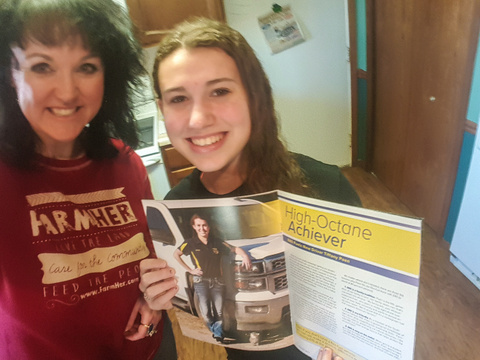
High-Octane Achiever: Ethanol Fuels New Driver Tiffany Poen
Most of us can vividly remember getting our driver’s license and our first car—our first taste of independence and grown-up responsibility. Fuzzier, however, is our first solo trip to fill up at the pump and the likely confusing choice we made purchasing gas. Not for Tiffany Poen, a new driver (and my awesome neighbor!) who is deliberate with her fuel choice.
Ethanol fuels her new adventure and, just like the truck she inherited from her grandfather, the choice was a matter of passing down a family tradition.
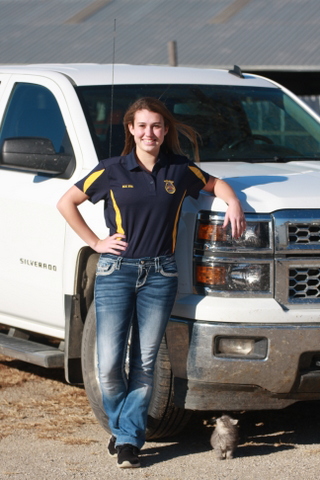
Tiffany Poen from Lake City, Iowa, is a proud South Central Calhoun FFA member and ethanol supporter.
“I really looked forward to getting my license and inheriting my grandpa Bob’s truck,” said Poen, 17, a high school junior from Lake City, Iowa. “This truck is special because my grandma Betty used to ride in it before she passed away in 2013 from complications of cancer.”
Family is important to Poen, who credits her grandfather, mom, and dad for teaching her to drive on the gravel roads near her family’s farm. After completing a driver’s education course, Poen was excited to receive her official driver’s license, which has opened up a new world of possibilities.
“I can go where I want,” said Poen, a high school basketball cheerleader and dancer who drives to practices at the local dance studio and joins friends at the community-owned movie theater where she volunteers.
No matter where she’s headed, there are three big reasons why Poen fills her flex-fuel truck with E85 (a blend of 85 percent ethanol):
1. E85 is a family tradition. Poen is the fifth generation of her family to farm. Her family raises corn that’s converted into ethanol. “My family only uses ethanol,” explained Poen, who plans to study agricultural business at Iowa State University and wants to pursue an ag sales career. “We’re proud that it’s a homegrown fuel that supports America’s farmers.”
2. E85 is eco-friendly. As a member of the South Central Calhoun FFA, Poen is growing her knowledge of agriculture while expanding her leadership skills. “Farming is focused on preserving our natural resources. I like how E85 is a clean energy source that helps protect the environment.”
3. E85 is easy on the wallet. When you’re a student, you have to make your money count. Poen appreciates how E85 and other ethanol blends are budget-friendly. “I want to make the best choices, and that includes E85.”
It was so much fun to interview Tiffany for this article, which appeared in the Winter 2017 issue of American Ethanol magazine, which is distributed nationwide. As you can see, even one of the Poen’s kittens got in on the act!
P.S. Thanks for joining me. I’m glad you’re here.
@Copyright 2017 Darcy Maulsby & Co.
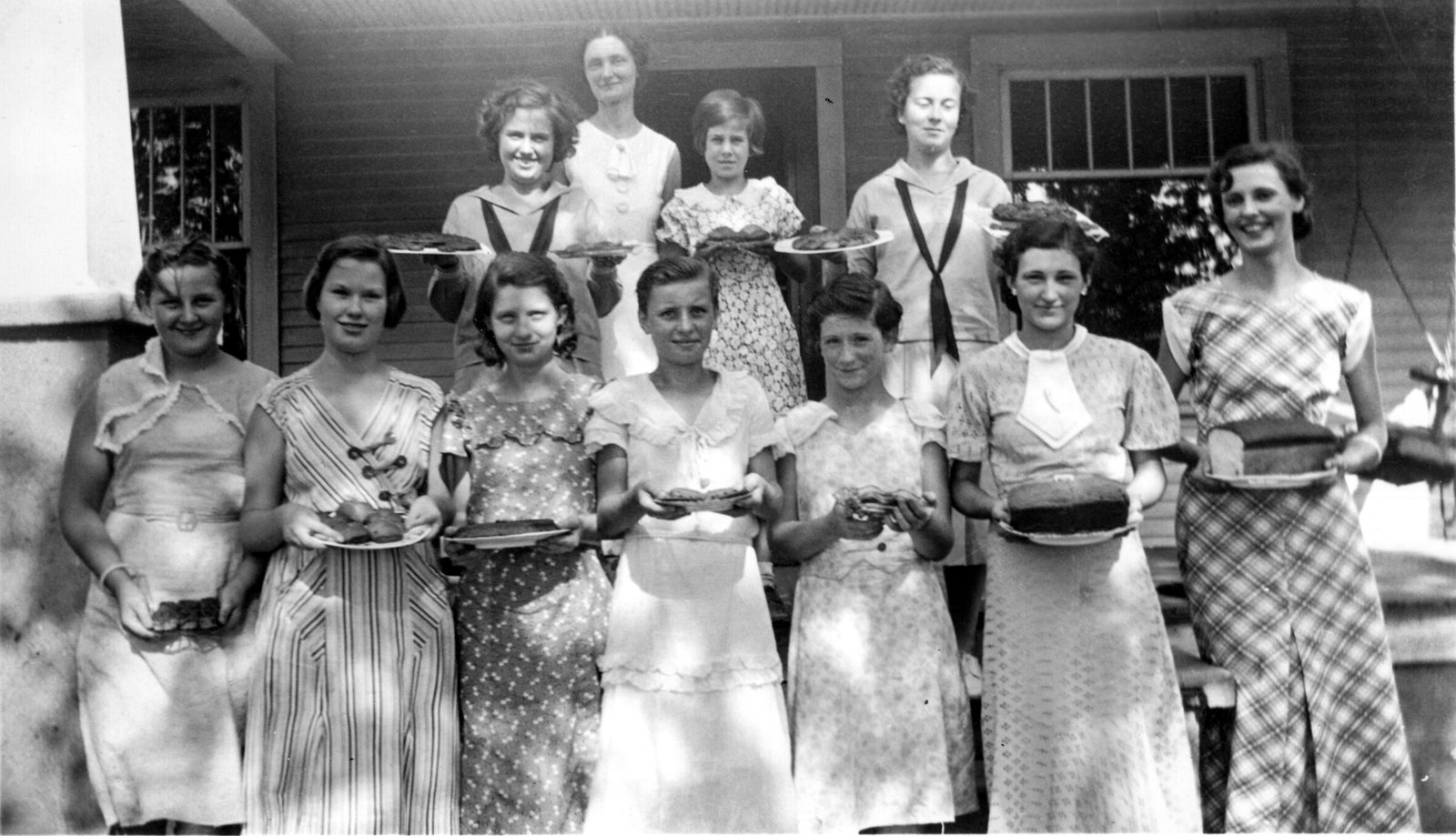
Growing with Grow: Iowa 4-H Leader Guides 100-Year-Old 4-H Club for 50 Years
With more than 50 years of experience leading the century-old Sugar Grove Sunshine 4-H Club in Dallas County, Iowa, Lorna Grow knows what it takes to help kids succeed. It doesn’t mean giving everyone a participation ribbon.
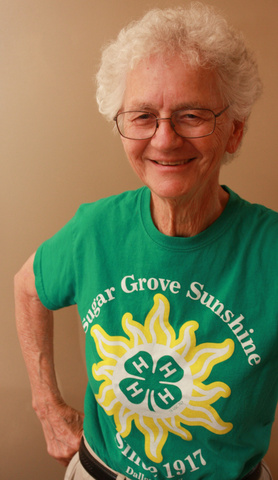
Lorna Grow has led the Sugar Grove Sunshine 4-H Club near Dallas Center, Iowa, since 1966.
“You gain confidence when you achieve,” said Grow, 84, a retired teacher who has guided Sugar Grove Sunshine 4-Hers since 1966 when her oldest daughter, Glenace, joined the club. “I expect high-quality work from my 4-H kids, and I coach them to help them learn.”
With her high-energy style, quick smile and lively personality, Grow is a hands-on instructor, whether she’s helping the kids refinish furniture, re-cane vintage chairs, bake a pie from scratch, sew on a button, hem pants, sew flannel-lined, zippered gun cases or complete basic home repairs like fixing a hole in the wall. While she coordinates 30- to 45-minute educational workshops that are held during the club’s meetings on the first Monday evening of the month, Grow doesn’t stop there.
“Because I’m retired, I can devote additional time for extra activities,” said Grow, a great-grandmother who marches in local parades with her 4-Hers, helps her club sponsor a county-wide cooking challenge for 4-Hers and their friends, inspires 4-Hers in design-a-room competitions, works with them throughout the Dallas County Fair and supports them at the Iowa State Fair.
Whenever there’s a local 4-H activity going on, Grow is there, said Aleta Cochran, county youth coordinator for Dallas County Extension. “The kids love Lorna. She always supports the kids, listens to them, encourages them and helps them grow.”
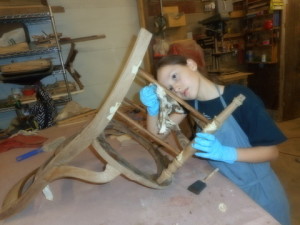
Refinishing furniture and chair caning offer Sugar Grove Sunshine 4-H Club members like Isabel Simpson the chance to learn skills they may not learn anywhere else.
A century of believing, a future of achieving
Grow has been involved with 4-H since 1943, when she joined the Union Lassies 4-H Club in Indianola. The all-girls club followed the traditional three-year program rotation of food, clothing and home improvement.
The club that Grow would become most affiliated with, however, is the Sugar Grove Sunshine 4-H Club in Dallas County. This group dates back to 1917, when a 4-H club led by Mrs. A.J. (Mary) Hayes was founded at Sugar Grove No. 9, a one-room country school near Dallas Center. This 4-H sewing club had 10 members, met weekly and wore blue uniforms with white caps. The entire club traveled to the Iowa State Fair by car (quite an outing in those days) and marched in the state fair parade behind the 168th Infantry.
The club evolved in 1922 into the Oblegro (Observe, Learn, Grow) Club. After an A.B.C. Club was organized in 1929, the two clubs joined and eventually became the Sugar Grove Sunshine 4-H Club, named after the local township. From 1918 through about 1965, the Dallas County Farm Bureau sponsored local 4-H clubs, which were separated into girls’ clubs and boys’ clubs.
“We are the oldest documented 4-H club in Dallas County,” said Grow, who added that 4-H clubs began to integrate in the 1990s. “I think the club’s founders would be surprised their group is still going all these years later when so many other 4-H clubs have died out.”
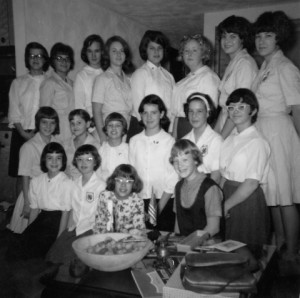
Sugar Grove Sunshine 4-H Club members, 1966-67
Today, the Sugar Grove Sunshine 4-H Club includes 42 boys and girls in grades 4 through 12 from Dallas Center, Adel, Van Meter, DeSoto, Perry, Grimes, Johnston and Urbandale. While it can be challenging for kids to find time for 4-H, due to busy schedules packed with sports, dance lessons and more, Grow refuses to schedule meetings on Sundays. “That’s family time,” she said.
Families are the key to success with any 4-H activity, she added. “I have wonderful 4-H kids because I have wonderful parents who care about their kids.”
Learning skills for life
These parents value the life lessons that 4-H teaches, including decision-making skills, goal setting, leadership and teamwork. To enhance the learning, Grow assigns older 4-Hers to help mentor younger club members.
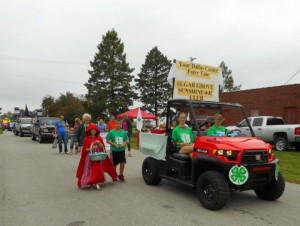
Members of the Sugar Grove Sunshine 4-H Club, along with club leader Lorna Grow, represented 4-H in this 2015 parade.
The Sugar Grove Sunshine 4-H members have also gained a new appreciation for history by helping plan the club’s 100-year-anniversary celebration, which was held Sept. 24, 2016, at the iconic Lake Robbins Ballroom near Woodward.
During the program, club members performed some of the songs that earlier generations of 4-Hers enjoyed from the 4-H Song Book. “The emphasis on music back then reflected people’s desire to get more culture into the rural areas,” said Grow, who added that the Adel Live Wires 4-H Club had an orchestra at one time.
Club members also researched local 4-H club record books dating back to the 1930s, when club projects included altering dress patterns and answering roll-call questions like “my favorite radio program.” Club members also scanned photos of previous generations of 4-Hers, including a group of girls showing off their baked goods for the 1934 Achievement Day. “Back then, you had to go through Achievement Day to have your project qualify for the Dallas County Fair,” Grow said.
While those early 4-H members used to meet in club members’ homes, today’s Sugar Grove Sunshine 4-H members meet in the basement of the Dallas Center Church of the Brethren. They also gather once a year at the Dallas Center-Grimes school to cook a meal and host an appreciation dinner for parents and guests. “We’ve served everything from Mexican to Chinese and prepare a four-course meal, including appetizers,” Grow said.
The learning opportunities that Grow offers 4-Hers are exceptional, emphasized Cochran with Dallas County Extension. “Lorna has done so much for 4-H. A volunteer like her is priceless.”
Grow said she’ll continue to serve as a club leader until she’s no longer effective. “Why do I keep doing this? Because I’m having fun. I love watching these kids grow and develop skills that will benefit them throughout their life.”
P.S. Thanks for joining me. I’m glad you’re here.
@Copyright 2017 Darcy Maulsby & Co.

Members of the Sugar Grove Sunshine 4-H Club, like Jacob Storey, enjoy hands-on learning for pie baking and other skills.

